Chaotically brilliant: Pierre Huyghe at Centre Pompidou
- (first published on artlifemagazine.com)
- Oct 9, 2013
- 4 min read
Updated: Mar 24, 2020
(Paris.) A typical retrospective show traces the career of an artist from start to finish - or to the present time if he's still active. It tells about periods, continuities, ruptures, and progress or variation in skill. Pierre Huyghe's exhibition at Centre Pompidou is not a typical retrospective. Nor is it just another thematic exhibition. There is no stringent concept, but a vast collection of works from the past twenty years presented in an open space, where each work appears equal to all the others. Visitors are not guided on a course; they don't learn anything about the artist's life and career, about his inspirations and influences. Time is excluded from the presentation, everything happens simultaneously. Were it not for the (necessary?) labels with title and date, it would be impossible to tell which works date back twenty years and more, and which ones are recent creations of a matured artist. Yet, somehow in the end all fits together by harmony and (or of) chaos. The show creates a world of its own, or probably it would be more correct to say, it lets us enter the world of Pierre Huyghe.
In the multitude of installations, videos, objects, drawings, and things that just happen, there are some patterns to discover: Regularities to hold on to in search for global interpretation - as vain an attempt as this might prove to be. One of those patterns is Metamorphosis.
Right at the start, the unsuspecting visitor open a glass door, and has to dodge quickly from water falling off the ceiling: water in three forms, liquid, ice and vapour. In the back of this glasshouse lies a marble woman, all classical pose, only her head is replaced by a beehive. An actual beehive, which explains the sharp honey smell floating through the museum. The chances to get stung are low, behind the hive the roof is open, so that the animals - who have no idea of being part of an artwork - can get their sugar outside and not in Pompidou's cafeteria. Besides it would be hard to approach them as piles of marble plates block the way. Marble plates -> marble sculpture. Plates for building, sculpture as art. Ok. And humanity has come a long way from Greek/Roman dignity to the colony of 7 billion insects it resembles today.
Among many, many, things in the main exhibition space, there are two aquariums with fish, water spiders and a hermit crab (using an oversized gold nugget for a home). There also is a terrified Podenco Ibicenco (looking extremely skinny even for a greyhound), the right front leg painted pink, running around, visibly feeling not at ease with the mass of people. Every hour or so, she follows a man on his tour around the expo. This trainer carries a lampshade on his face and between tours sits on a bench reading, but this is probably not a part of the show. The dog then lies on one of several furs on the floor (very much unlike other civilised countries, in France people still wear fur, even if they are not Eastern European escorts married to millionaire building contractors with Mafia ties). Now getting back to different forms: a dog is a land-living mammal, a bee a flying insect, a fish a - well, a fish, and the rest something in-between (ask a biologist of your trust for more detail). Life forms as different forms of life all depend on water; water that may present itself in solid, liquid or vaporous form.
A video continues with animal life. Dog and bee-woman find themselves in the wild, where flies impregnate a decomposing rat. This documents Pierre Huyghe's 2012 dOCUMENTA project, where he placed objects and beings on a recycling ground. It also reminds of that National Geographic documentary about the world after humanity.
Hybrid creatures are a recurrent motive in Pierre Huyghe's work, people often appear with animal masks. If you are familiar with ancient Egyptian hieroglyphs you might feel at home here. From time to time an art student (or are they interns at Centre Pompidou?) walks around the exhibition in the same disguise.
An installation with music, vapour and light evokes primordial soup and witches' caldrons. Short films tell stories, or rather situations, as visual metaphors of life with nearly no words. Visitors can indulge in the action and leave their fingerprints on an ice skating rink (reminiscent of the one Huyghe used for his work The Journey That Wasn't in 2006, mingling images from his factual voyage to Antarctica and its fictional recreation), play with pink quartz sand, fingerpaint a wall or play the video game classic Pong on the ceiling. We meet Annlee again, the manga character Huyghe bought together with fellow artist Philippe Parreno in 1999 to sublicense it for the use in other artists' works. On the backside of a wall runs his documentary on the singer who gave her voice to Disney's Snowhite in the 1950s, and is now suing the empire for unpaid royalties. Talking about music: One of the videos plays at a very high volume, so no matter where you are in the show, every five minutes you will hear an extract of Kate Bush's 1978 song Wuthering Heights. After the tenth repetition of "It's me, Cathy" you feel very much like shouting back "I know, now shut the @&$# up, will you?!" (Heathcliff would do the same).
The visitor gets lost in impressions, and some time or another everyone shuts off his mind. Like in a musical composition, there are recurring motives - the dog, the masked men, the colour pink - there are different paces, rhythms. But better stop. Stop thinking, and relax. This is a descent into an artist's mind, a hallucinogenic trip, so just "turn on, tune in and drop out". Maybe that's what it's all about: to bring back dreams to our disenchanted world, to undermine rational reality and to promote the natural, the animalistic side of humanity. Children are another favourite of Huyghe's, and what are they else than untamed, irrational human beings? With causeless emotionality and wordless mythology, Pierre Huyghue recreates a naïve paradise with no tree of knowledge in sight.
Pierre Huygues, 25 September 2013-06 January 2014, Centre Pompidou

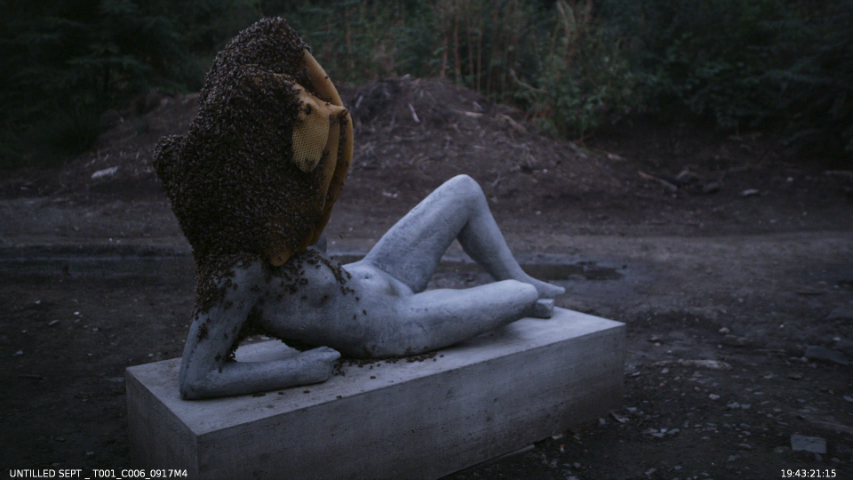

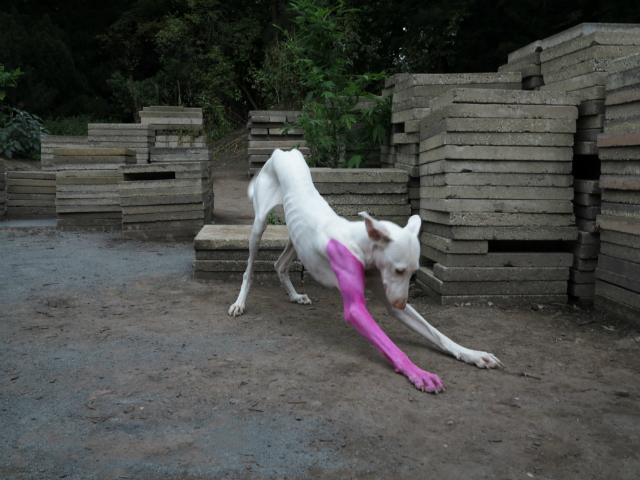

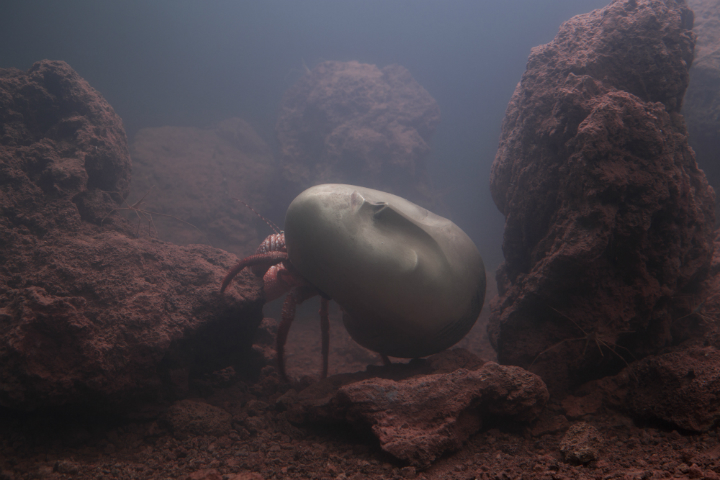

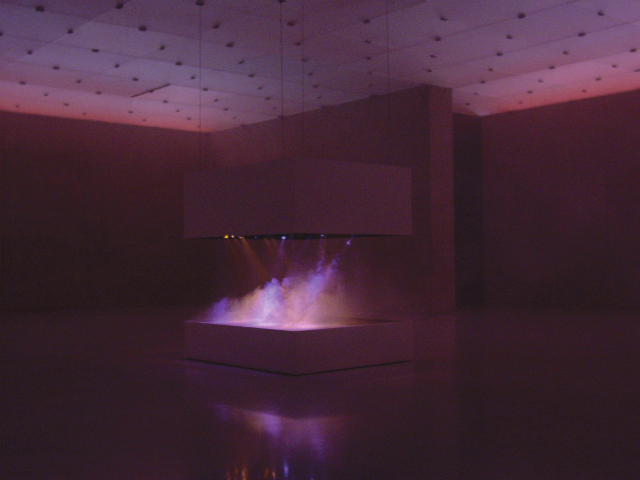

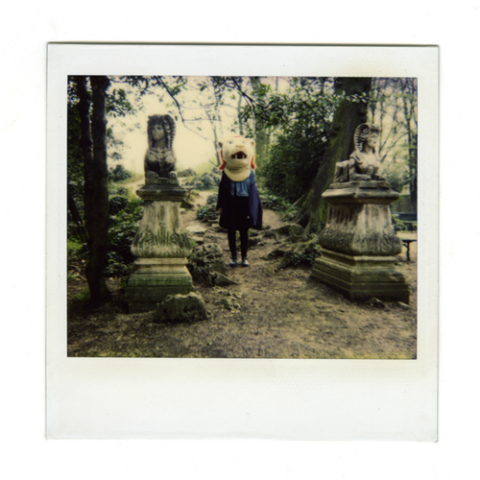
Comments